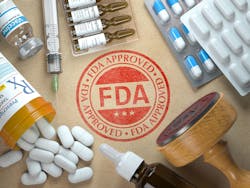Last October, the U.S. Food and Drug Administration (FDA) held a summit to better understand how human and animal foods are sold through business to consumer (B2C) e-commerce models in the U.S. and globally. The meeting was a direct response to the pandemic and the increasing number of people ordering food online. As such, there is a new need to establish a course of action to address potential food safety vulnerabilities, including those that may arise in the last mile of delivery.
Topics discussed at the three-day event included types of B2C e-commerce models (i.e. meal kit subscription services and ghost kitchens); types of delivery models (i.e. third party and autonomous delivery—such as drones); safety risks associated with foods sold through B2C e-commerce; standards of care used by industry to control these safety risks; regulatory approaches to food sold online; and labeling of foods sold through e-commerce.
This followed the introduction of the FDA’s New Era of Smarter Food Safety Blueprint first introduced in 2020 (and put on hold due to the pandemic), which identifies future paths of action to address how new business models of food delivery impact food vulnerability. The blueprint builds off of the FDA’s Food Safety Modernization Act (FSMA), and states, “The world is changing rapidly and we are in the midst of a food revolution…foods are being reformulated, new foods and food production methods are being realized, and the food system is becoming increasingly digitized.”
To that end, the blueprint is centered around four core elements: Tech-enabled traceability; smarter tools and approaches for prevention and outbreak response; new business models and retail modernization; and food safety culture.
Let’s focus on tech-enabled traceability because the first step in the FDA’s work will be to complete the FSMA Section 204 rulemaking to harmonize the key data elements and critical tracking events needed for enhanced traceability. Ultimately, the goal is to have end-to-end traceability throughout the food safety system. According to the blueprint, part of that is to “implement an internal digital technology system, such as blockchain, to receive critical tracking events and key data elements from industry and regulatory partners.”
Section 204 defines stricter recordkeeping requirements for certain foods (cheeses, nut butter, fresh herbs, fruits and vegetables, fish, ready-to-eat salads, etc.). The rule creates a standardized approach to traceability recordkeeping. And blockchain is key.
This is not a new concept. Automation World has written about how Walmart is using blockchain to onboard suppliers to the IBM Food Trust platform. IBM Food Trust uses blockchain to create visibility and accountability in the food supply chain by connecting growers, processors, distributors, and retailers through a permissioned, permanent and shared record of food system data in an immutable ledger to ensure quality of products.
A reminder of what blockchain is—and isn’t—in the supply chain. First of all, it isn’t cryptocurrencies, like Bitcoin. It is the technology that underpins cryptocurrencies and other applications by providing a secure, decentralized approach to distributing digital information in a way that can be shared but not modified.
The FDA is encourage more use of blockchain. “More comprehensive traceability through access to records of key data elements associated with critical tracking events in food production and distribution has the potential to help us pinpoint the exact sources of foods involved in an outbreak,” said Frank Yiannas, the FDA’s safety commissioner for food policy and response. “Not only does this help us to remove potentially unsafe products from the market more quickly, preventing additional illness or death, but it also helps us to conduct root cause investigations to figure out what went wrong leading to the outbreak.”
The problem has been a lack of data, which can be used to not only create more traceability and help to provide for predictive analysis.
The question is: Can blockchain solve food traceability in the supply chain, which is now extended—through e-commerce—to last mile delivery to the consumer? Will a consumer receive a text message that says the bag of lettuce they just bought is tied to an outbreak of foodborne illness? The answer will likely be: Yes. That’s what the FDA’s New Era of Smarter Food Safety Blueprint aims to do. But it will be up to the food and beverage manufacturers to figure out how to do that.
Leaders relevant to this article:

